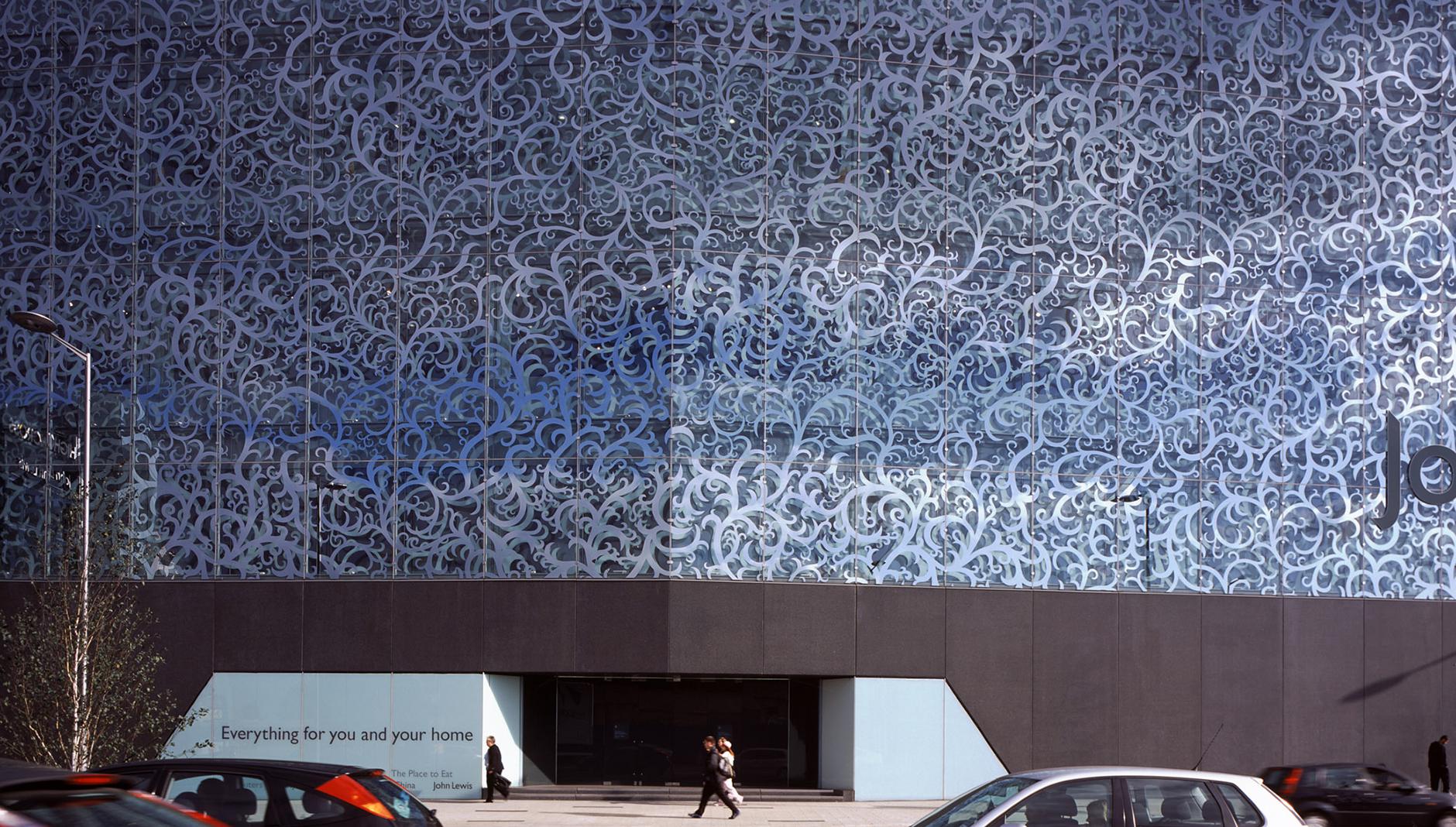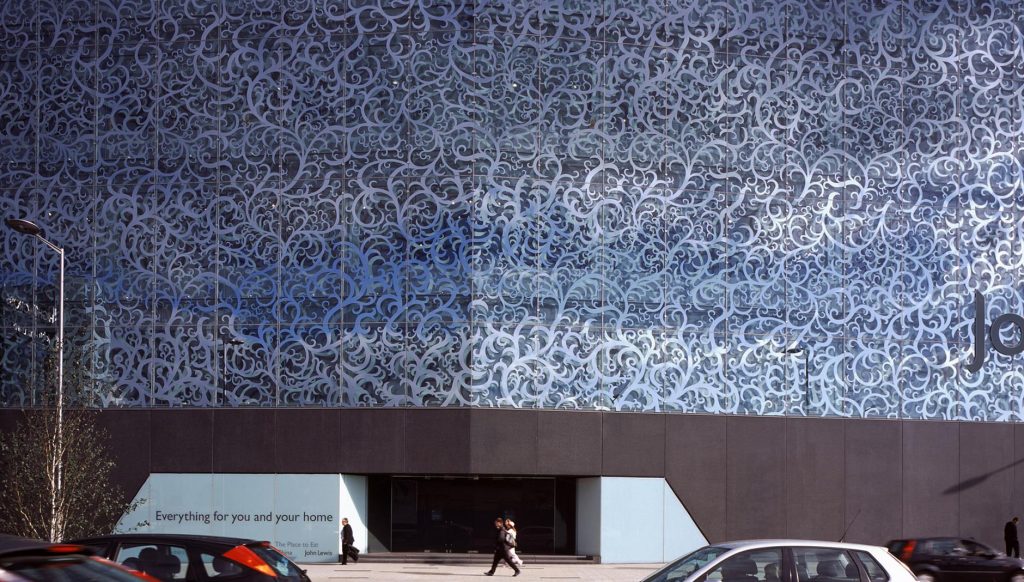Patterns and building skins
The exterior face of a building can be distinguished using architectural or ornamental details. The skin of a building plays an important role as it is a transition between inside and outside. Sometimes the skin functions as a component of sustainability and at other times just as an ornamental packaging.


Prada Shop, Tokyo designed by Herzog and de Meuron
The glass facade of Prada Shop in Tokyo designed by Herzog and de Meuron consists of various rhombic elements made of glass planar concave and convex units underlining the crystalline character of the building. Reflections created from these incompatible geometries enable viewers, both inside and outside the building, to see constantly changing pictures and almost cinematographic perspectives of Prada products, the city and themselves. The rhombic steel structure also acts to support the structure. It is actively incorporated in the design’s structural engineering and, in conjunction with the vertical cores of the building, it supports the ceilings.


Polish Pavilion, World Expo, WWAA Architects
The perforated facade of Polish Pavilion for the World Expo, Shanghai is inspired by traditional Polish folk-art paper cut-outs. It is made of CNC-cut plywood and the patterns on the outside of the building continue to the interior space. The intention was for the structure décor to illustrate and make reference to tradition, but eventually to be a contemporary reinterpretation of this tradition, a creative addition for today by way of inspiration rather than replication.


John Lewis Department Store and Cineplex, Leicester, FMA Architects
FMA’s double facade decorative design introduces a number of local references. The use of pattern is inspired by Leicester’s 200 years of textile and weaving manufacture, the transparency of saris worn by the Indian population living in Leicester and John Lewis’ own tradition of producing quality fabrics and archive of textile patterns. The pattern is like a textile cladding which varies in density so as to create a variable degree of transparency. There are two layers of glass curtain wall and the mirrored pattern reflects its surroundings around the building. FMA Director Farshid Moussavi says “Unlike a piece of textile which is flat and fixed, the mirror pattern on the building becomes three dimensional and changes throughout the day. It reflects the surrounding context, and in doing so, merges the physical context with the cultural context surrounding the project, becoming a richer and denser three dimensional pattern as the sun moves around the building, maximizing the effect of the skin’s role as an architectural fabric that both reveals the exterior to the interior and conceals the interior from the exterior.”
Ioannis Christopoulos

